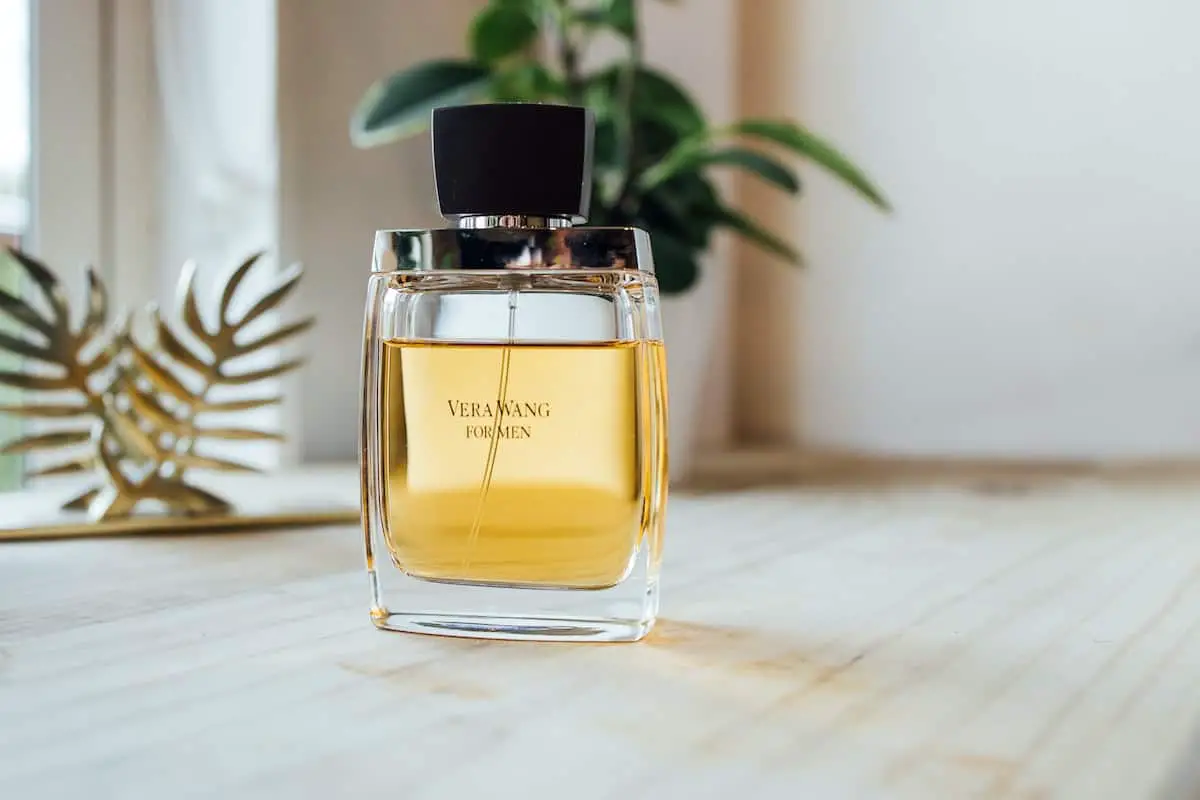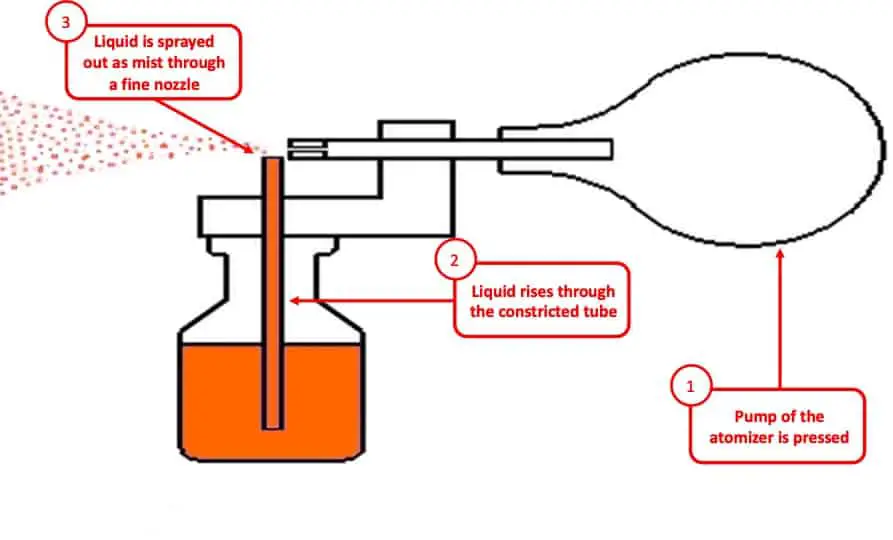Is Perfume a Liquid or Gas? [Here’s What You Should Know!]
Have you ever smelled a perfume so good you wanted to become a perfumer yourself? Fragrances can make us wonder about their contents, origins, and even their matter-state. Sometimes, we can end up having arguments about the latter because the subject is so easy to misunderstand.
Perfume is a gas when vaporized but is usually packed and sprayed as a liquid. A part of the fragrance turns to gas because of air friction and its resultant heat. However, a bulk or the perfume stays on one’s body as a liquid layer that is vaporized slowly, note by note.
In this article, you will discover more about different states of fragrances, including solid, liquid, and gas perfumes. Moreover, you will find out whether gases are pre-added to a liquid perfume container and how a liquid fragrance can make the air smell good. By the end, you will know all about perfumes’ matter states and their rationale.
Is a Perfume Solid, Liquid, or Gas?

While a fragrance is almost always sampled as a vapor, the actual state of the perfume product is not always gaseous. Perfumes are so often packaged as liquids that people assume that all perfumes are liquid. In reality, perfume can be solid, liquid, or gas, depending on its packaging and the definition of the term perfume.
Solid Perfume
It is easy to imagine perfume in a liquid or gaseous state as these are the most common forms that we often encounter. However, solid perfumes are also used quite commonly, mostly unbeknownst to your knowledge!
I’ve actually written a detailed article on solid perfumes. Make sure you check out it for more details!
The word “perfume” here refers to “fragrant product,” as solid perfumes are made by shortening perfume oils in wax or cream. These perfumes are ideal for travel as packaging them doesn’t entail the same risk as carrying a pressurized container full of flammable liquid.
The most common form of solid perfume is one shortened in beeswax, but perfumed candles, personal fragrance diffusers, perfumed soaps, and fragrant cold creams can all qualify as solid perfumes. Any fragrance directly applied to one’s person without the use of a nozzle, rollerball, or vaporizer is likely to be a solid perfume.
Perfume as a Liquid
Since perfume is sampled as gas after its molecules acquire enough heat, liquid perfumes are the best media to hold fragrant molecules. Perfume as a liquid can preserve the fragrant properties of floral essence and similar compounds while providing an easy solution for instant vaporization.
Liquid perfume is often bottled or packaged with an atomizer. However, that’s not the only form you will find a liquid perfume in. Fragrant oil roll-ons, body mist canisters, and body spray cans all contain liquid fragrance. Among liquid perfumes, essential oils are the least scrutinized by the TSA as most other liquid fragrances are not allowed on planes.
Perfume in a Gaseous State
When we say that perfume can be a gas, we use a different definition of the term compared to the one we use for liquid and solid perfumes. Those perfumes are merely products that hold a fragrant property. In its gaseous form, perfume is pure; it isn’t a perfume product but the fragrance itself that one samples as a vapor.
The human nose specializes in breathing in air, which is a mixture of gasses. That’s why one can experience a fragrance only in its gaseous state. However, because perfume gets “used up” as a gas, it isn’t the ideal state to capture a fragrance for later use, which is why perfume oils are suspended in a liquid state.
How Does Liquid Perfume Come Out as Mist or Gas?
Liquid perfume comes out as a mist as it is atomized due to the spraying mechanism of the bottle. The liquid perfume is forced to rise through a constricted tube. The pump pressurizes the liquid and forces it out of the tube from a fine nozzle. This converts a liquid into a fine mist.

That said, small quantities of gaseous elements do get vaporized when you spray perfume. Usually, the top notes get vaporized almost immediately. Hence, they turn into a gaseous state releasing the fragrance molecules while a bulk of the perfume sits in a thin liquid layer that slowly evaporates with body heat.
If liquid perfume were to turn into a gas immediately, it would have the same effect as a room freshener. The fragrance would make the environment smell pleasant as its contents would vaporize upon friction with the air. On the other hand, if the perfume were to stay a liquid, there would be no advantage to wearing it as no one would be able to smell it.
Are Gases Used in Perfumes or Fragrances?
Now that you know that perfumes are sampled upon getting vaporized and that perfume bottled contain pressurized contents, you might wonder if any liquefied gasses are included in perfume bottles. You would be right in a way.
Gases are used in perfumes as unstable pressurized contents and help make the perfume smell nice on the first spitz. Usually, these gasses are liquified into Volatile Organic Compounds (VOCs) that switch to a gaseous state rapidly after leaving a pressurized container.
The rest of the perfume contents get vaporized with the aid of alcohol that acts as a diffuser.
The difference between these vapors and added gasses is that the perfume vapors are created through interaction with alcohol while the gasses are released because they are pressurized into liquid existence that isn’t stable enough to stay in the state outside of the bottle.
How Does Liquid Perfume Produce Fragrance That Travels Through Air?
Any argument about the matter state of perfumes will always return to the same question: how does liquid fragrance move through the air. Those that assert that perfume is a gas say the movement is possible only in its gaseous form. Others say that liquids can travel with pressure, which is true. But why does it smell good?
Liquid perfume produces a fragrance that travels through the air through vaporizing. This process occurs in different stages, starting with the release. As perfume is released into the air, all the liquid droplets experience air friction. The most volatile among these turn back into pleasant-smelling gasses.
The rest of the contents sit on whichever surface they are sprayed. If applied to the body, the contents get warmed with body heat and turn into gasses. However, if the same perfume was sprayed on a jacket, then its contents would vaporize with environmental heat. Ultimately heat is required to turn fragrance alcohol into a gas that catalyzes the vaporizing process.
The fragrance you smell immediately after spraying a liquid perfume is the scent you cannot judge your perfume on. It is not likely to last, and unfortunately, we are wired towards judging anything, including perfumes, by their first impressions.
It is best to have someone else spray a sampling strip with the perfume in your absence and smell it 30 minutes later. That’s when you will be sampling the liquid contents being vaporized by the heat.
Do Deodorants Use Gas?
Anyone who has sprayed a spitz of liquid perfume like a body mist and has used a canned deodorant knows that one has a much higher pressure and larger gaseous output. Deodorants don’t even feel like liquids as their output doesn’t settle down like a pump of liquid perfume. This can make one wonder if a deodorant contains gas.
Deodorants use gas in a sense as they feature VOCs that emerge from the fragrant mixture of compounds that make up a Deodorant’s contents. However, not all pressurized liquid in a deodorant can is in a gaseous state—the longer-lasting a deodorant spray, the fewer gas contents it has.
That said, the gas contents of deodorant are much smaller than one would assume from their effect. Deodorants mostly contain water which is good for creating the release pressure associated with cans of body spray and room fresheners.
Credit to Laura Chouette on Unsplash for the featured image of this article

![Should You Wear Perfume to a Funeral? [Is it Appropriate?]](https://styleuphq.com/wp-content/uploads/2021/09/woman-with-lily-flowers-and-coffin-at-funeral-PM62BEU-optimized-1200x800.jpeg)
![Can Shoes Be Washed in a Washing Machine? [Full Guide!]](https://styleuphq.com/wp-content/uploads/2023/09/washing-dirty-shoes-in-the-washing-machine-2021-09-01-01-19-01-utc.jpeg)
![Using Perfume for Dogs: Is it Dangerous? [Comprehensive Guide!]](https://styleuphq.com/wp-content/uploads/2021/09/portrait-of-happy-multiracial-couple-scratching-th-9ZJ73ZW-optimized-1200x800.jpeg)
![Should You Wear Perfume to Work? Is it Impolite? [Full Guide!]](https://styleuphq.com/wp-content/uploads/2021/05/Depositphotos_232444608_xl-2015-lightest.jpg)
![Why Does the Apple Watch Keep Ringing? [Here’s the Fix!]](https://styleuphq.com/wp-content/uploads/2022/03/pexels-ingo-joseph-1682821-3-1200x800.jpg)
![What is Hair Perfume? [Should You Even Buy It!]](https://styleuphq.com/wp-content/uploads/2021/07/Woman-applying-perfume-on-her-hair-2-1200x800.jpg)